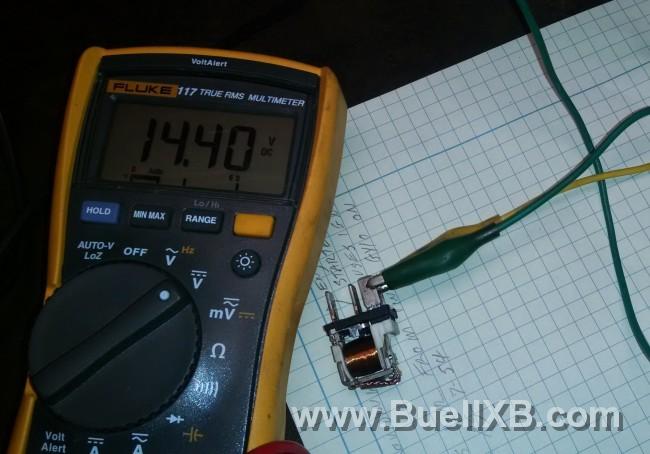I have seen a bad relay socket overheat so well worth checking the fit of the female sockets for the relays. Once you get a resistive connection and high current it tends to be a self propagating situation that ultimately ends in failure. The resistive connection dissipates heat that can add to the problem by adding charred deposits and now you have a bigger resistor that dissipates even more heat at the connection and so on...
Look closely at the relay spade connectors - particularly the big ones that carry the switched load. Clean then with something like a small brass brush - don't lay into them with emery paper as that will take off any plating that is left. If they are pitted and burnt you can clean them up and if you are in a situation where you need to get it operational you could tin the male pins with solder but I would find the nearest bin for them where that is possible.
If the female socket is burnt / partially burnt you have to replace it - again you can scrape any burnt crap off and get a reasonable connection to get you out of trouble but the only correct thing to do is replace it.
Now, to get the female sockets out of the fuse block is actually very easy. The only tool need is a very small flat-blade screwdriver (the size you would use for the screws on reading glasses).
Step1. Remove the battery connections - the last thing you want is the possibility of shorting anything out as that is just asking for trouble. I just went out to the shed and took these photos for you and you can see I took the battery out altogether.
Step2. Apply gentle upwards force on the fuse/relay block and release the two plastic tabs circled - move them toward the L/H side of the bike.

Step 3. With the fuse/relay block lifted up you can see the two plastic tabs.

Step 4. Remove the bottom cover by unclipping the 4 small tabs (2 on each side) visible in this photo.

Step 5. Remove the relays and then the red plastic section - carefully pry it up with the small screwdriver.

Step 6. To remove a female socket you need to lightly depress the plastic latch that is easily seen from the top and with draw the socket by pulling
gently on its respective wire/s from the rear.

Step 7. You can now really test the firmness of the female socket action against a single relay pin and any overheated sockets will be very obvious once extracted.
I had a another photo of that but the upload limit is 5 per post.
Now, a couple of crucial points -
- it goes without saying that you need to be very careful to replace female sockets in their original position and I would advise only removing/replacing one at a time to minimise stuff-ups.
- none of these clips require a great deal of force to remove. Be gentle, if it does appear to need a lot of force it probably isn't released correctly so STOP before you break it and try again.
- again, I stress the need to undertake this with the battery disconnected.
These photos were taken of the fuse/relay block from my '06 Uly (it is out of action with a dead fuel pump so easier to get at) but looking at my '09 they look virtually identical in the way they are mounted.
The relays on my '09 are warm to the touch after running the bike for mins - I imagine the relay coil would be pretty warm to touch directly but I have never done that. Something that is overheating to the point of failure definitely warrants a close look at the connections for the relays.
The fuses are the mini-fuse versions - exactly the same as later cars.
Ray







